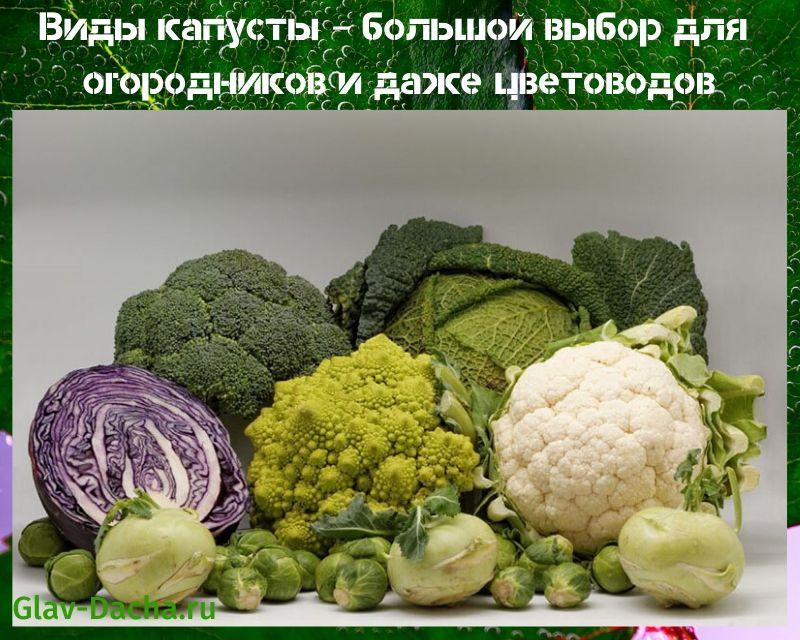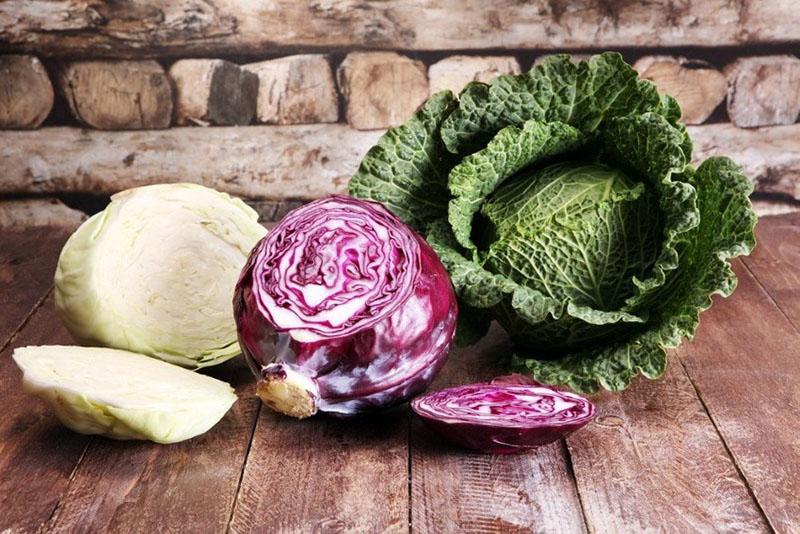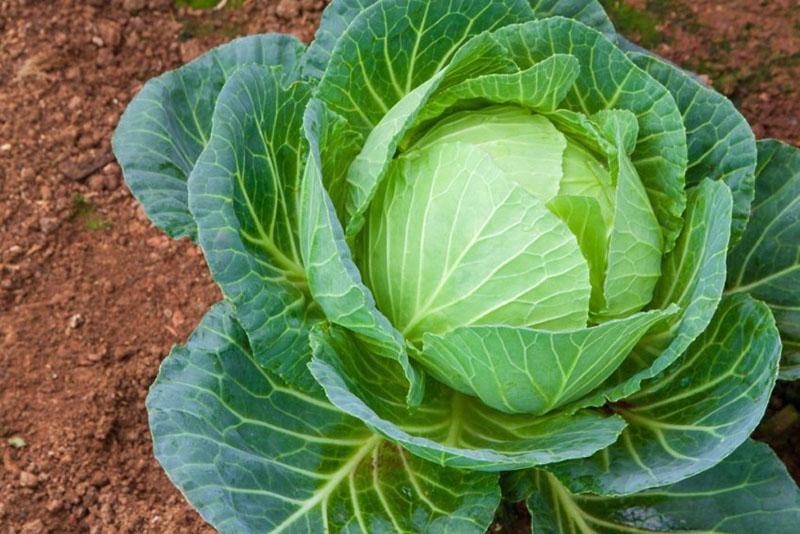Cabbage types are a great choice for gardeners and even flower growers
 Surely you have at least once wondered what types of cabbage to plant in the country. The "garden" leader was and remains white cabbage. But there are still a lot of quite interesting and also edible varieties. There are more than 50 types of culture in total, and some of them do not at all look like cabbage. They are grown, first of all, for our consumption or further processing.
Surely you have at least once wondered what types of cabbage to plant in the country. The "garden" leader was and remains white cabbage. But there are still a lot of quite interesting and also edible varieties. There are more than 50 types of culture in total, and some of them do not at all look like cabbage. They are grown, first of all, for our consumption or further processing.
But there are also very beautiful decorative varieties that are planted in the front gardens. And also fodder species used in the diet of pets. Common features of cabbage, inherent in all its variations, is the taproot system. The aerial part consists of leaves, inflorescences and fruits in the form of a pod with seeds.
Find out:how to cook fresh cauliflower - a step by step recipe with a photo
Types of cabbage

These are the types of cabbage:
- white cabbage;
- redhead;
- Beijing;
- savoy;
- Brussels
White cabbage
 There are more than 400 varieties, the common feature of which is large dense forks. It forms in the center of a rosette of leaves. Most varieties have a green head of cabbage, but the color can vary from pale green to dark green. White cabbage can be of early, middle or late ripening.
There are more than 400 varieties, the common feature of which is large dense forks. It forms in the center of a rosette of leaves. Most varieties have a green head of cabbage, but the color can vary from pale green to dark green. White cabbage can be of early, middle or late ripening.
You can eat cabbage raw in salads, make first or second courses from it. Also, the white pot is fermented and pickled. And late varieties can be stored for a long time, providing a supply of vitamins.
Red cabbage
 In structure, this variety does not differ from the white one. She also ties tight forks. A characteristic feature of red-headed varieties (and there are more than 40 of them) is the purple color of the leaves. In this case, the veins and stump remain white. In addition, the leaves are coarser in texture.
In structure, this variety does not differ from the white one. She also ties tight forks. A characteristic feature of red-headed varieties (and there are more than 40 of them) is the purple color of the leaves. In this case, the veins and stump remain white. In addition, the leaves are coarser in texture.
Purple-fruited cabbage is more commonly used fresh. After heat treatment, it takes on an ugly gray color. But pickled or sauerkraut does not lose its color. Of the advantages, it should be noted that such varieties are stored longer than white ones, and they also contain more vitamin C.
Chinese cabbage
 The early ripening and very useful species will surprise you with long loose heads of cabbage. Its leaves are delicate and juicy, with a beautiful wavy edge. But at the same time, they are quite elastic and crunchy. Peking is good in salads because it has a delicate, pleasant taste. It can also be salted and pickled or used for cabbage rolls.
The early ripening and very useful species will surprise you with long loose heads of cabbage. Its leaves are delicate and juicy, with a beautiful wavy edge. But at the same time, they are quite elastic and crunchy. Peking is good in salads because it has a delicate, pleasant taste. It can also be salted and pickled or used for cabbage rolls.
The novelty of Peking cabbage is a variety with purple fruits, similar in color to the red cabbage species.
Savoy cabbage
 Very beautiful view with unusual corrugated leaves that gather in a perfectly round head of cabbage. The leaves themselves are colored dark green, but the veins on them remain white. Savoy is never large; on average, a head of cabbage weighs 1 kg, besides, it is loose.
Very beautiful view with unusual corrugated leaves that gather in a perfectly round head of cabbage. The leaves themselves are colored dark green, but the veins on them remain white. Savoy is never large; on average, a head of cabbage weighs 1 kg, besides, it is loose.
The forks are easily disassembled into separate leaves, which have a sweetish taste. Therefore, delicate cabbage rolls are often prepared from savoy cabbage.
Brussels sprouts
 This variety can be safely called the smallest, because its heads of cabbage are no more than 5 cm in diameter. But on one plant they are tied up to fifty. The cabbage looks unusual: first a tall stem grows, and then forks form along its entire length. The top of the stem is crowned with a rosette of rounded leaves.
This variety can be safely called the smallest, because its heads of cabbage are no more than 5 cm in diameter. But on one plant they are tied up to fifty. The cabbage looks unusual: first a tall stem grows, and then forks form along its entire length. The top of the stem is crowned with a rosette of rounded leaves.
Brussels has a characteristic nutty flavor. It can be boiled, fried, added to soups and salads. It is stored for a long time and has a high frost resistance, but it ripens late (at the end of September).
Find out: Romanesco cabbage - what is it?
Types of cabbage with a leafy structure
 Lush cabbage bushes are more like grass, since they lack the main culture feature - the head of cabbage. The aerial part of the plant consists of leaves, wide or narrow. They are used for food. Otherwise, leafy varieties are no different from the head form. They have the same pivotal root system, a high content of nutrients. And even frost resistance is at the highest level.
Lush cabbage bushes are more like grass, since they lack the main culture feature - the head of cabbage. The aerial part of the plant consists of leaves, wide or narrow. They are used for food. Otherwise, leafy varieties are no different from the head form. They have the same pivotal root system, a high content of nutrients. And even frost resistance is at the highest level.
They do not have a head of cabbage, but such types of cabbage grow juicy foliage (with photo):
- Chinese. It looks more like a salad rosette. The bright green oval leaves are attached to thick white petioles that can be eaten too. Early varieties are distinguished by their early maturity and are ready for consumption within a month after planting. More common on sale Pak Choi variety.

- Leafy. It differs from the Chinese with curly foliage and thinner petioles, which are attached to a small stem. The color can be either traditionally green or unexpectedly purple.

- Japanese. A characteristic feature of the species is dissected leaves, smooth or wavy. After cutting, they are able to grow back quickly.

Japanese cabbage also has other names: mizuna, green mustard, Japanese green salad.
Types of cabbage with inflorescences instead of a head of cabbage
 Some varieties of culture look quite original. They still have a head of cabbage, only it does not consist of leaves, but of a large number of inflorescences.
Some varieties of culture look quite original. They still have a head of cabbage, only it does not consist of leaves, but of a large number of inflorescences.
An unusual structure can be seen in pictures, for example, such cabbage as:
- Colored - numerous dense inflorescences are collected around a thick branched stem. There are varieties with different colors: white, yellow, purple and even orange.

- Romanesco is a type of cauliflower, but its inflorescences are not round, but pointed. The buds are collected in a spiral and are distinguished by a delicate texture and nutty-creamy taste.

- Broccoli - has a central trunk, from which flower stalks with small buds diverge to the sides. They are often colored green, but there are varieties with white or purple flowers. However, the broccoli must be cut before the buds open.

Kohlrabi - cabbage, which has a stem plant instead of a head of cabbage
 A turnip that has crawled to the surface is the first impression of kohlrabi in the garden. She does not have the usual head of cabbage, only leaves, and even then in small quantities. They stick up and are attached to the stem on long petioles. But the stem is not long, but round, just like a turnip. It is he who is used for food, to taste reminiscent of the cabbage stump, but sweeter, without bitterness. There are white, green and even purple varieties. kohlrabi.
A turnip that has crawled to the surface is the first impression of kohlrabi in the garden. She does not have the usual head of cabbage, only leaves, and even then in small quantities. They stick up and are attached to the stem on long petioles. But the stem is not long, but round, just like a turnip. It is he who is used for food, to taste reminiscent of the cabbage stump, but sweeter, without bitterness. There are white, green and even purple varieties. kohlrabi.
Delicate stems can be obtained only on loose soil.
Ornamental cabbage
 Brassica is the name of a universal variety of cabbage, which can exist both in flower beds and in the garden. Its colored rosettes look like marvelous large roses blooming right on the ground. White, cream, with purple streaks or deep purple and even blue ... Such plants will add bright colors to the flower garden. Especially varieties with corrugated or dissected leaves. The height of the plants ranges from a compact 20 cm to an impressive 1.3 m.The leaves themselves can grow up to 60 cm in length and up to 30 cm in width.Moreover, after the first frost, the leaves do not wither, and their color becomes even more expressive. Brassica will bypass many flowers, withstanding frosts down to -12 ° C.
Brassica is the name of a universal variety of cabbage, which can exist both in flower beds and in the garden. Its colored rosettes look like marvelous large roses blooming right on the ground. White, cream, with purple streaks or deep purple and even blue ... Such plants will add bright colors to the flower garden. Especially varieties with corrugated or dissected leaves. The height of the plants ranges from a compact 20 cm to an impressive 1.3 m.The leaves themselves can grow up to 60 cm in length and up to 30 cm in width.Moreover, after the first frost, the leaves do not wither, and their color becomes even more expressive. Brassica will bypass many flowers, withstanding frosts down to -12 ° C.
Ornamental cabbage is also edible. Its leaves contain a lot of selenium, although they are somewhat rough and slightly bitter.
Kale
 Hardly anyone will recognize cabbage in miniature resemblances of trees with a high stem and crown of hanging leaves. Planted in even beds, it resembles a row of soldiers or a palm grove. Kale has an unusual structure. High, up to 2 m, the trunk is juicy, but powerful enough not to break. Its top is decorated with long leaves attached by cuttings. They are usually green in color, but some species have a beautiful purple hue.
Hardly anyone will recognize cabbage in miniature resemblances of trees with a high stem and crown of hanging leaves. Planted in even beds, it resembles a row of soldiers or a palm grove. Kale has an unusual structure. High, up to 2 m, the trunk is juicy, but powerful enough not to break. Its top is decorated with long leaves attached by cuttings. They are usually green in color, but some species have a beautiful purple hue.
On the territory of our homeland, different types of cabbage for fodder purposes are grown. But the most common variety is Vekha.
The purpose of growing such cabbage is clear from the name. She goes to feed cattle, as well as feathered inhabitants of the subsidiary farm. They eat both leaves and stems. At the same time, in terms of nutritional value, cabbage leaves behind even corn and root crops. Another advantage of the crop is its high yield (up to 8 centners from 0.1 ha) and unpretentiousness. Thanks to the developed root system, plants are not afraid of short-term droughts. Also, they will not harm plantings and frosts, up to -10 ° C. The harvest ripens in the fall, and the harvest takes place in November. This makes it possible to feed the animals with green food until winter.